How Norway’s latest crop of designers is engaging with circularity
Discover this year’s Norwegian Presence projects from 11 designers, shot by Lasse Fløde and styled by Kråkvik&D’Orazio at Edvard Munch’s own studio in Ekely
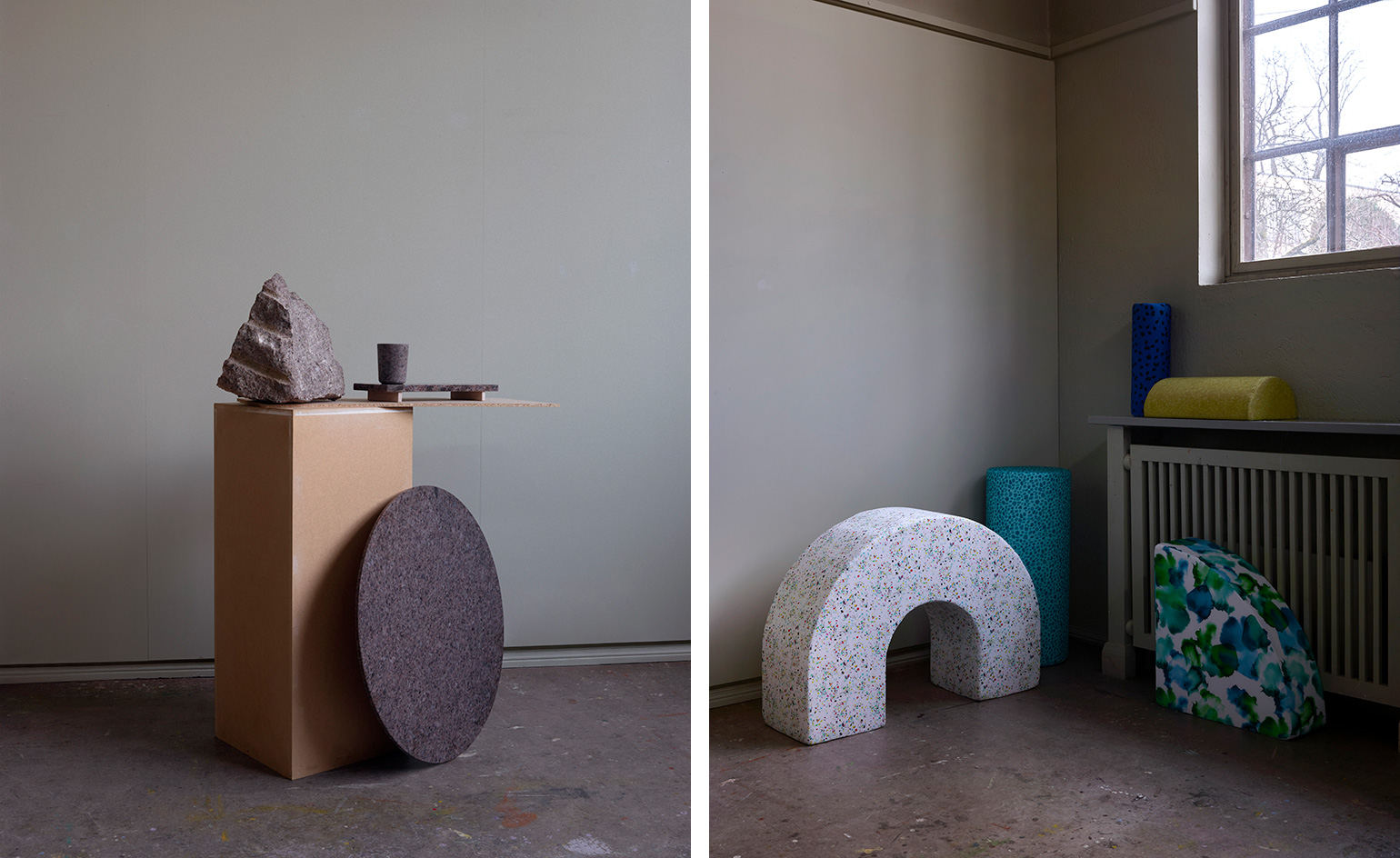
Lasse Fløde - Photography
Contemporary Norwegian design has always had an underlying focus on innovation and sustainability, and since 2015, annual initiative Norwegian Presence (shown during Milan Design Week) has presented an exciting showcase of this modus operandi. This year, the project returns with a new group of designers, whose work intends to spark a dialogue on innovation in the design and production process, shown virtually inside Norwegian painter Edvard Munch’s own studio in Ekely in lieu of the Italian furniture fair’s physical presentation.
Circular production, sustainable design thinking and materials are at the heart of the new edition, featuring 11 designers chosen for their commitment to a serious environmental concern combined with an innovative aesthetic.
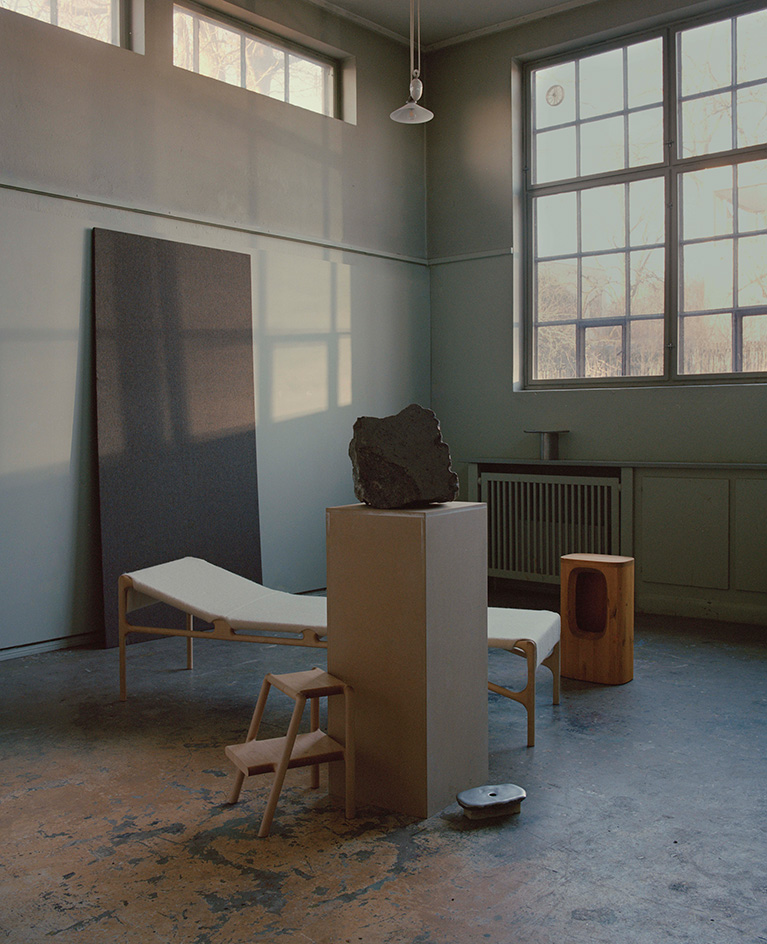
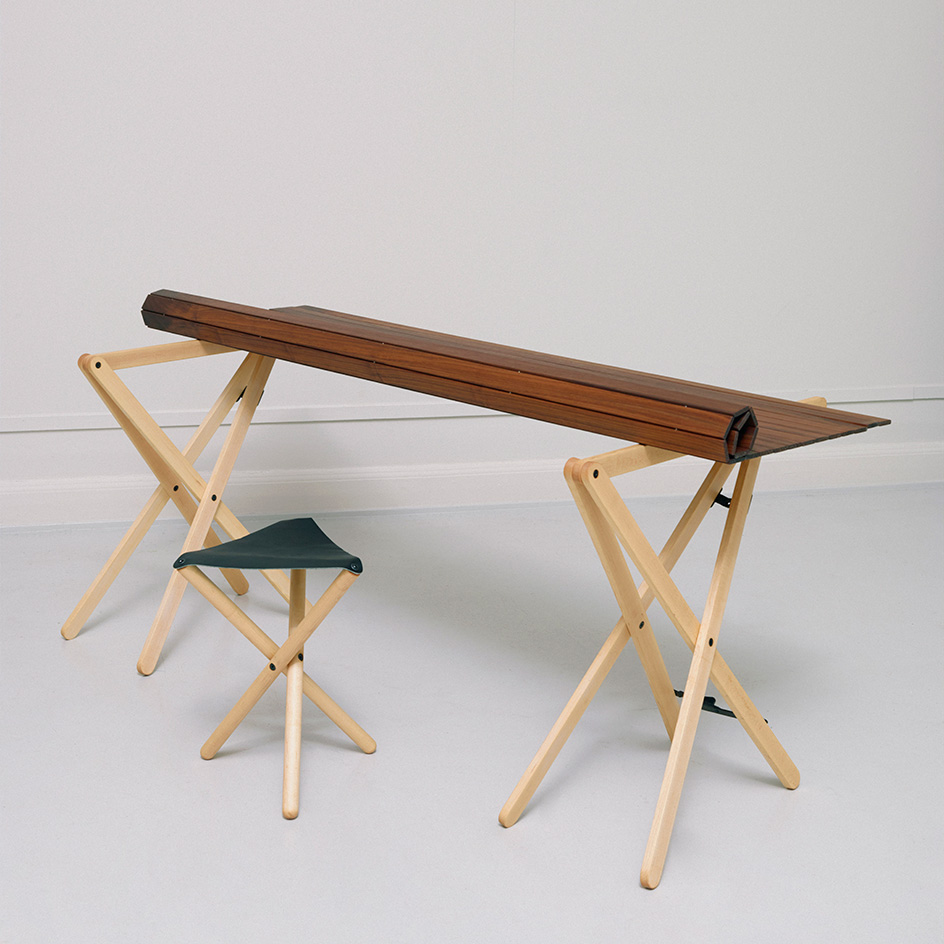
Above, Scala stepstool and Lulle daybed by Nils Stensrud; Korpus and Furublokk by Andreas Bergsaker. On the floor, Alumium & Stone by Ali Gallefoss; raw stone from Lundhs Real Stone; textile by Gudbrandsdalens Uldvarefabrik. Below, Aaltobelli, by Philipp von Hase
‘All the projects in the exhibition show a product that has been created in an innovative way, focusing on low emissions, craftsmanship and processes that lead us into a new century,’ explains Marit Haugen from Oslo-based architecture practice Haugen/Zohar. Together with Benedicte Sunde from Design and Architecture Norway (DOGA), she curated this year’s selection, which the pair describes as ‘sympathetic, thrifty and innovative’.
The collection of pieces speaks honestly about processes and materials, which are clearly reflected in their aesthetic. ‘What does pretty mean?’ asks Haugen. ‘The exhibition is a reaction against the glamour that has dominated the design field for a while now.’ She cites the work of Poppy Lawman, whose Papirstein chair, made of compressed paper in collaboration with a 122-year-old paper mill, is not presented as a traditional furniture piece, the result of techniques normally employed in packaging design.
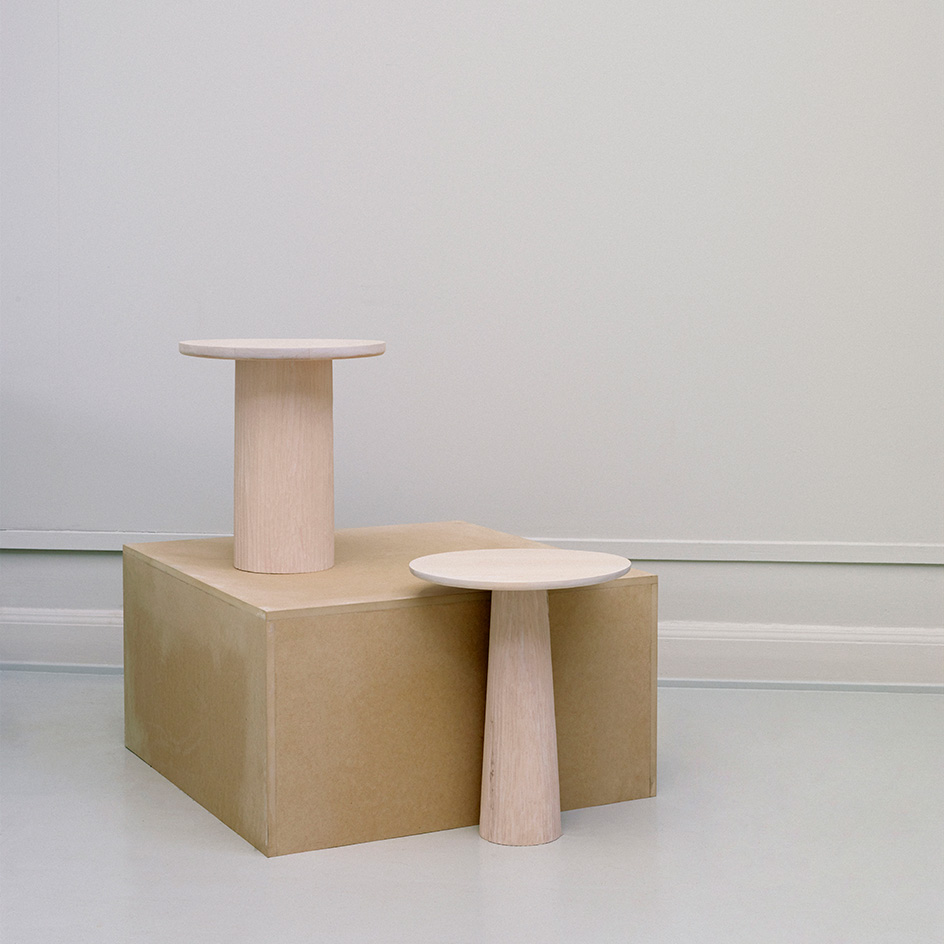
Pedestal by Vilde Hagelund
‘We are done with the aestheticization of the Norwegian landscape, where nature is reflected in the arches of a sofa,’ adds Sunde. ‘Now the raw, Norwegian materials are the products. It’s seaweed plastic, it’s natural stone, recyclable aluminium, wood and paper.’
‘Norwegian farms’ signature stump stool is simply a part of a tree trunk. We are a nation of raw materials’ - Benedicte Sunde
The materials and techniques presented range from digital textile print to stone-cast aluminium, with more traditional fabrication methods in the mix. Some of the objects’ pioneering approach is reflected in their functionality, for example in Philipp von Hase’s Aaltobelli set, comprising a table and stools that can be disassembled and stored in a leather case – an answer to a more flexible way of living.
‘As a nation […] we find things in nature and make something from it,’ explains Sunde. ‘Norwegian farms’ signature stump stool is simply a part of a tree trunk. We are a nation of raw materials.’
This year’s Norwegian Presence roster was photographed by Lasse Fløde and styled by Kråkvik&D’Orazio at Munch’ original atelier. ‘The paint stains on the floor of the studio are visible traces of Edvard Munch’s work and held a special meaning for us,’ Sunde says. ‘They are a symbol of what the exhibition is about: the creative process behind the products, the properties of the materials and the openness of what is required.’
INFORMATION
Wallpaper* Newsletter
Receive our daily digest of inspiration, escapism and design stories from around the world direct to your inbox.
Rosa Bertoli was born in Udine, Italy, and now lives in London. Since 2014, she has been the Design Editor of Wallpaper*, where she oversees design content for the print and online editions, as well as special editorial projects. Through her role at Wallpaper*, she has written extensively about all areas of design. Rosa has been speaker and moderator for various design talks and conferences including London Craft Week, Maison & Objet, The Italian Cultural Institute (London), Clippings, Zaha Hadid Design, Kartell and Frieze Art Fair. Rosa has been on judging panels for the Chart Architecture Award, the Dutch Design Awards and the DesignGuild Marks. She has written for numerous English and Italian language publications, and worked as a content and communication consultant for fashion and design brands.
-
 All-In is the Paris-based label making full-force fashion for main character dressing
All-In is the Paris-based label making full-force fashion for main character dressingPart of our monthly Uprising series, Wallpaper* meets Benjamin Barron and Bror August Vestbø of All-In, the LVMH Prize-nominated label which bases its collections on a riotous cast of characters – real and imagined
By Orla Brennan
-
 Maserati joins forces with Giorgetti for a turbo-charged relationship
Maserati joins forces with Giorgetti for a turbo-charged relationshipAnnouncing their marriage during Milan Design Week, the brands unveiled a collection, a car and a long term commitment
By Hugo Macdonald
-
 Through an innovative new training program, Poltrona Frau aims to safeguard Italian craft
Through an innovative new training program, Poltrona Frau aims to safeguard Italian craftThe heritage furniture manufacturer is training a new generation of leather artisans
By Cristina Kiran Piotti
-
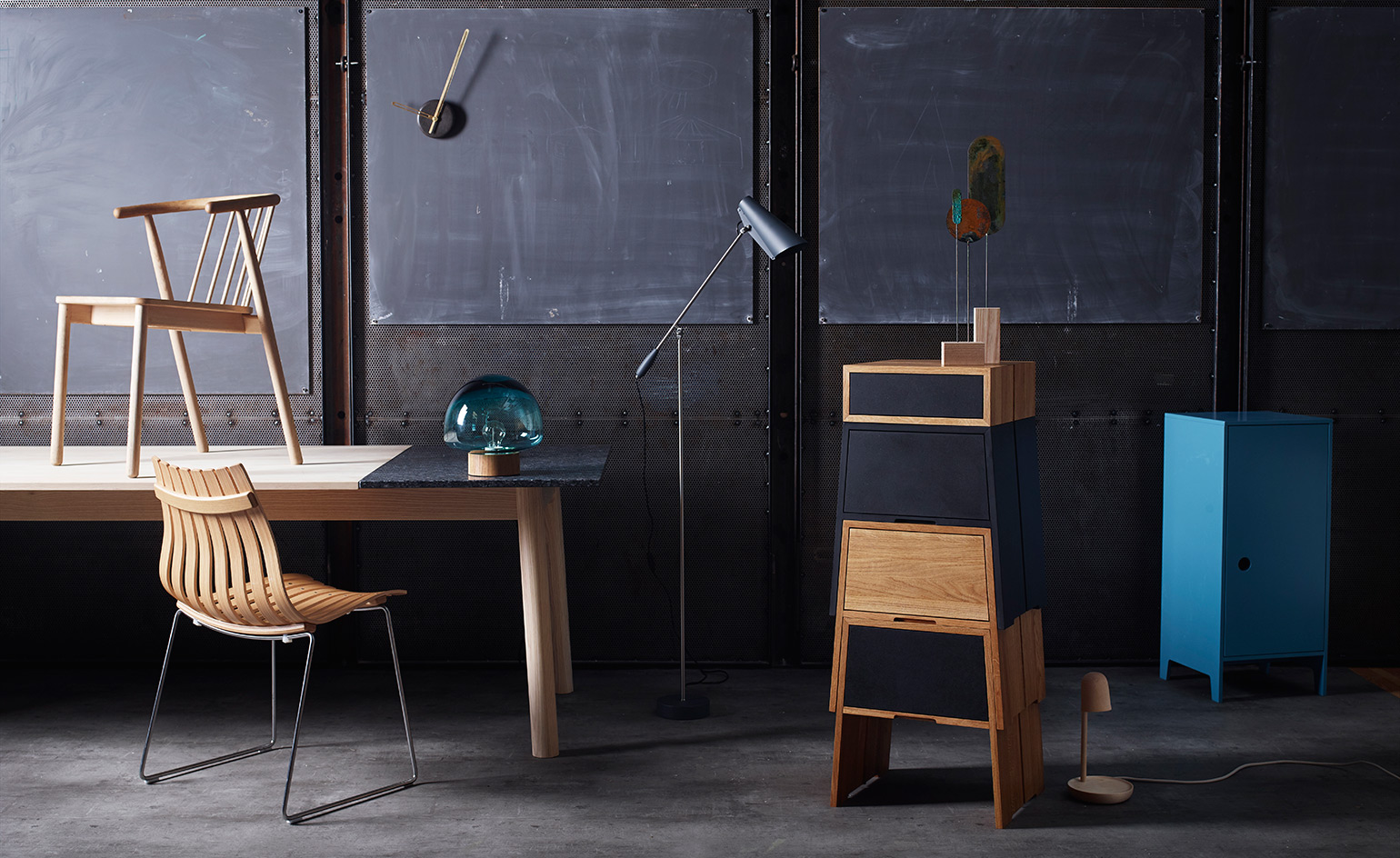 100% Norway: the ones to watch at Tent London
100% Norway: the ones to watch at Tent LondonAhead of the London Design Festival, we shine the spotlight on the ones to watch at this year's 100% Norway exhibition
By Jessica Klingelfuss
-
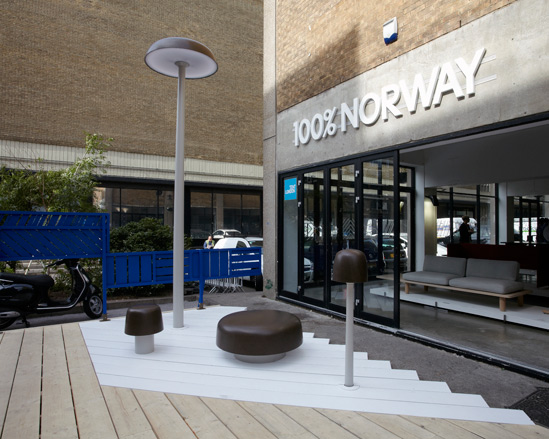 100% Norway's latest exhibition brings Scandinavian design to a wider audience
100% Norway's latest exhibition brings Scandinavian design to a wider audienceBy Ali Morris